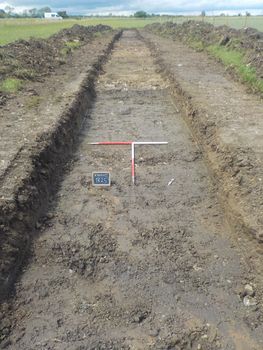Data from a Trial Trenching at Lower Radbourne Deserted Medieval Village, Warwickshire, 2020 (HS2 Phase One)
High Speed Two Ltd., Archaeological Research Services Ltd, 2024. https://doi.org/10.5284/1119084. How to cite using this DOI
Data copyright © High Speed Two Ltd. unless otherwise stated
This work is licensed under a The Open Government Licence (OGL).
Primary contact
High Speed Two Ltd.
2 Snowhill
Queensway
Birmingham
B4 6GA
United Kingdom
Tel: 08081 434 434
Resource identifiers
- ADS Collection: 4326
- DOI:https://doi.org/10.5284/1119084
- How to cite using this DOI
Overview

Of the 91 trenches excavated, 35 revealed the presence of archaeology that included ditch, pit, posthole, gully, stone surface and structural features as well as stray small finds from the topsoil.
These features produced Mesolithic through medieval artefacts including Mesolithic and later Neolithic chipped flints and Iron Age to Medieval ceramics up to the 15th century AD, as well as some post-medieval ceramics (Trench 25 and topsoil).
The results of the evaluation confirmed the presence of the Radbourne deserted medieval village (DMV) and the presence of three circular ditches identified from recent geophysical surveys and ditches of apparent Iron Age date.
This is a regionally significant archaeological site with deposits that provide an opportunity to investigate and understand aspects of an 11th to 15th century AD DMV as well as its antecedents which go back to the Iron Age. It is located in an area where few such sites have been excavated and previous observations suggest that sites with 10th to 11th century activities are relatively few. There is also the survival of earlier features in amongst the DMV, including potential prehistoric and Romano-British remains.






